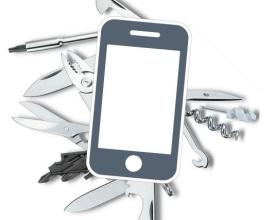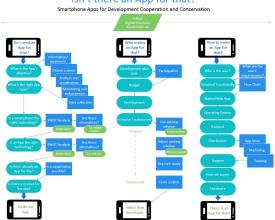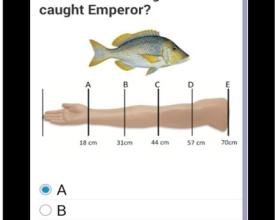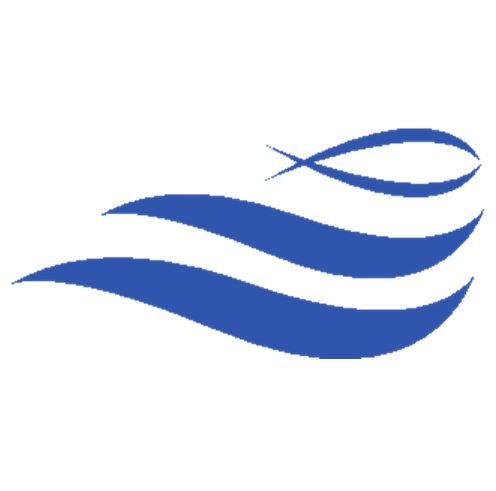
N'existe-t-il pas une application pour cela ? Les applications pour smartphones dans la gestion des ressources marines
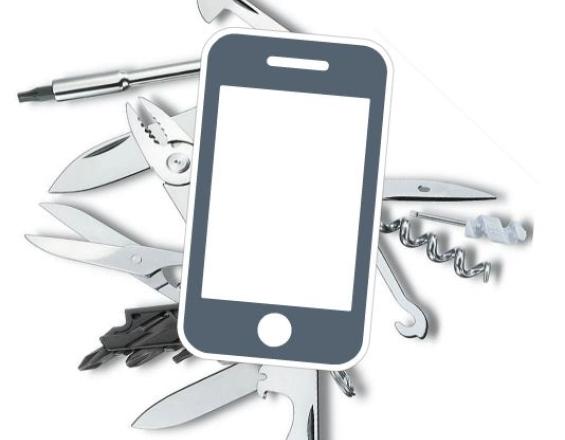
La gestion des ressources marines repose en grande partie sur les données, mais dans de nombreux contextes, y compris dans les pays insulaires du Pacifique, le manque de données sur la pêche et d'autres ressources marines empêche la prise de décisions éclairées en matière de gestion.
Vous trouverez ici la documentation complète sur l'utilisation et le développement d'applications pour smartphones dans le cadre de la gestion des ressources (marines) : - The spectrum of Smartphone Apps in natural resource management - A guide for App Development - Open Data Kit for data driven marine management in Fiji as example (en anglais)
Contexte
Défis à relever
- La gestion des ressources marines repose en grande partie sur les données, mais dans de nombreux contextes, les données restent insuffisantes, ce qui empêche la prise de décisions éclairées en matière de gestion.
- Les systèmes de rapports manuels et sur papier sont largement utilisés, bien qu'ils soient généralement lourds, gourmands en ressources, sujets aux erreurs et lents.
- Les données restent souvent enfermées dans des tableurs et les résultats ne sont pas mesurables, visibles, accessibles ou transparents.
- En guise de réponse, les applications pour smartphones sont très répandues et constituent des outils potentiellement puissants.
- Cependant, les applications sont perçues comme un "chevalier en armure brillante" - une nouvelle solution à un vieux problème. La numérisation d'une solution ne fait souvent que numériser le problème, sans nécessairement le résoudre.
- Au lieu de suivre la mode, il convient de bien définir le problème et l'objectif de la solution (applicative) proposée, puis de procéder à une analyse SWOT minutieuse et d'examiner les autres solutions possibles.
- Les avantages spécifiques des applications peuvent être, par exemple, une large portée géographique, une collecte de données plus efficace ou l'utilisation des capteurs des smartphones.
Emplacement
Traiter
Résumé du processus
Après avoir exploré tout le spectre des applications pour smartphones dans la gestion des ressources naturelles, un guide pour le développement d'applications fournit un arbre de décision guidant le processus. L'utilisation de l'Open Data Kit donne un exemple d'application pour la gestion marine basée sur les données à Fidji, y compris une documentation détaillée sur l'utilisation de l'Open Data Kit à travers KoBoToolkit. Au-delà, MACBIO vise à collaborer avec les parties prenantes nationales et régionales pour développer des solutions et des normes durables pour l'utilisation d'applications mobiles open-source à l'appui de la gestion durable des ressources marines et de la conservation.
Blocs de construction
Le spectre des applications pour smartphones dans la gestion des ressources (marines)
Il existe un large éventail d'applications pour smartphones dans le domaine de la gestion des ressources (marines). Ce bloc donne une orientation dans la jungle des applications, en commençant par les définitions et le contexte de l'utilisation des smartphones et des applications, ainsi que les possibilités qu'ils offrent, par exemple pour la gestion des ressources naturelles.
En outre, il n'est pas nécessaire de réinventer la roue si la réponse à la question "N'existe-t-il pas d'application pour cela" est oui. Une liste donne un aperçu des différents types d'applications et des exemples de gestion marine et d'autres secteurs, avec un accent particulier sur la région du Pacifique.
Facteurs favorables
La technologie mobile est en plein essor et de plus en plus de personnes y ont accès, car la puissance de calcul des smartphones augmente, leur prix baisse, la couverture des téléphones mobiles et l'accès à l'internet se généralisent et la culture numérique augmente - dans les pays industrialisés comme dans les pays en développement et les économies émergentes.
Les applications sont de plus en plus populaires et peuvent être des outils puissants, si le problème abordé et l'objectif de la solution (d'application) proposée sont bien définis.
Leçon apprise
Bien qu'il existe de nombreux facteurs d'amélioration qui peuvent transformer les applications en outils puissants, la nouveauté et la faisabilité technique peuvent souvent être trompeuses. La numérisation d'une solution ne fait souvent que numériser le problème. Au lieu de suivre la mode, il convient de bien définir le problème et l'objectif de la solution (applicative) proposée, puis de procéder à une analyse SWOT minutieuse et d'examiner les autres solutions possibles.
Les avantages spécifiques des applications peuvent être, par exemple, une large portée géographique, tandis qu'une menace pourrait être le manque d'acceptation par certains publics, en fonction, par exemple, de leur contexte culturel et de leur culture numérique.
Le développement et l'utilisation des applications doivent donc être considérés comme un processus stratégique. Pour une telle approche stratégique du développement, de l'utilisation et du suivi des applications, il est essentiel d'identifier le bon type d'application en fonction du public et de l'objectif identifiés, qu'il s'agisse de "science citoyenne", de "crowdsourcing", d'engagement, d'éducation ou de collecte de données individuelles.
Un guide pour le développement d'applications
Le développement et l'utilisation d'applications est un processus stratégique. Ce guide vise à faciliter ce processus, en suivant les principes numériques.
Les objectifs et les types d'applications sont tout d'abord analysés, avant d'examiner les forces et les faiblesses, ainsi que les alternatives aux smartphones et aux applications en tant que technologie. Ce chapitre se termine par un guide sur l'étude du marché des applications existantes.
Ensuite, l'environnement propice au développement d'applications est examiné, du développement centré sur l'utilisateur aux considérations budgétaires en passant par les options de développement.
Enfin, les aspects techniques du développement d'applications sont explorés, en s'attardant sur les besoins des utilisateurs, les fonctionnalités, les plateformes, le backend et le frontend, la distribution et les considérations matérielles.
Facteurs favorables
La réussite du développement dépend de facteurs favorables, en suivant un processus stratégique qui permet de s'assurer que la solution de l'application
- est adaptée aux besoins de l'utilisateur
- utilise le bon type de technologie pour atteindre l'objectif fixé
- ne réinvente pas la roue, si d'autres solutions appropriées existent déjà
- respecte le budget
- est développée en utilisant les ressources de manière efficace
- possède les fonctionnalités requises
- utilise la plateforme la plus appropriée
- combine le backend et le frontend
- est bien distribué
- prend en compte le matériel et la connectivité
Leçon apprise
L'arbre de décision ci-dessous peut aider à comprendre si et comment une application peut être une solution utile à un problème donné, en suivant ces questions directrices :
- "Ai-je besoin d'une application pour cela ?
- "Qui fabrique une application pour cela ?
- "Comment créer une application pour cela ?"
Cette structure est basée sur notre expérience et vise à éviter les solutions d'application qui ne prennent pas correctement en compte l'objectif, le besoin de l'utilisateur, les ressources disponibles et les exigences techniques.
Ressources
Kit de données ouvertes pour une gestion marine basée sur les données aux Fidji
Le projet MACBIO aide ses partenaires à développer des approches efficaces de la gestion marine. En 2015, le projet a été sollicité pour soutenir la conception et le développement de solutions mobiles open source pour la collecte de données dans les zones marines gérées localement à Fidji, entre autres. Des recherches approfondies et des tests sur les plateformes existantes et des exemples éprouvés ont permis d'identifier Open Data Kit (ODK), comme une solution open source appropriée, en particulier en combinaison avec KoBoToolkit.
Facteurs favorables
En général, le développement de l'application a été réalisé de manière itérative et réactive. Cette approche s'est avérée très efficace et a permis d'améliorer de plus en plus l'application. Il est important de noter que la formation, les tests et les améliorations itératives avec toutes les parties prenantes concernées ne doivent pas être sous-estimés avant d'utiliser avec succès une application sur le terrain. Le fait de conserver l'approche en interne présentait des avantages évidents en termes de réactivité.
Leçon apprise
Approche stratégique : Objectif et valeur ajoutée d'une application
- Ne pas réinventer la roue : Étude de marché initiale, discussions avec les parties prenantes et étude des enseignements tirés de l'expérience.
- La phase de validation du concept est importante : Systèmes modulaires à faible coût
- Le diable est dans les détails : Contexte des utilisateurs, disponibilité de l'internet et de l'électricité, coûts et modalités des plans de données, etc.
- Approche interne et itérative avec des boucles de rétroaction rapides
- Développement pas à pas avec les utilisateurs
- Approches open source, compatibles et évolutives, afin d'éviter la duplication des efforts de développement, les dépendances et les effets d'enfermement.
- Les questions de sensibilité des données sont importantes, notamment pour instaurer la confiance.
Impacts
- Mise à disposition d'une documentation complète sur la conceptualisation, le développement et la mise en œuvre d'applications pour smartphones destinées à la gestion des ressources (marines)
- Les représentants du réseau des aires marines gérées localement aux Fidji (FLMMA) ont été formés à l'utilisation d'enquêtes par smartphone développées en collaboration pour la collecte de données dans les 400 communautés du réseau.
- D'autres acteurs fidjiens de la gestion des ressources marines ont été formés à l'utilisation d'enquêtes par smartphone développées en collaboration pour la collecte de données.
- Des acteurs de la planification de l'espace marin issus de différents ministères à Kiribati ont été formés à l'utilisation d'enquêtes par smartphone développées en collaboration pour la collecte de données.
- Plusieurs centaines d'experts en gestion des ressources naturelles et en coopération au développement ont été formés à la conception, au développement et à la mise en œuvre d'applications pour smartphones dans le cadre d'un cours en ligne ouvert à tous (MOOC) sur le développement numérique.
Bénéficiaires
Un grand nombre de personnes qui dépendent des ressources marines bénéficient d'une meilleure gestion de celles-ci. Les ministères, les organisations et les réseaux gouvernementaux bénéficient d'approches de gestion plus efficaces et efficientes, telles que le réseau FLMMA (s.b.).
Objectifs de développement durable
Histoire

N'existe-t-il pas une application pour cela ? Il y en a probablement une ! La technologie mobile est en plein essor et de plus en plus de personnes ont accès à ces technologies ainsi qu'à l'internet. En 2016, on compte environ 2 milliards d'utilisateurs de smartphones sur les 4,6 utilisateurs de téléphones portables dans le monde, et près de 3 milliards sont attendus en 2020. Aujourd'hui, 68 % des propriétaires de smartphones utilisent des applications. En 2013 déjà, 56 milliards d'applications ont été téléchargées sur les smartphones.
Il ne s'agit pas d'un phénomène propre au monde industrialisé. Si l'utilisation de l'internet et des smartphones y est plus répandue, les économies en développement et émergentes rattrapent leur retard avec 54 % d'utilisation moyenne de l'internet et 37 % de possession moyenne d'un smartphone. Notre monde est de plus en plus connecté numériquement.
Cela modifie notre façon de communiquer, de travailler et de vivre, et entraîne des changements sociaux fondamentaux. La combinaison de la puissance de calcul, des capteurs et de l'adoption à grande échelle par les utilisateurs signifie que l'internet, les smartphones et en particulier les applications offrent des possibilités sans précédent : Des opportunités pour le développement, la prospérité, la qualité de vie et la durabilité dans le monde entier, qu'il s'agisse de l'accès à l'information, à l'éducation, à la santé et à la sécurité ou de la collecte de données, de la gestion et de la participation aux processus politiques - même dans les régions les plus reculées.
Les applications pour smartphones constituent donc un aspect essentiel des technologies de l'information et de la communication (TIC) et sont de plus en plus utilisées pour assurer la durabilité, le développement et la conservation. Une recherche automatisée dans le Google Play Store en 2015 montre à quel point les applications pour smartphones relatives à la durabilité sont devenues populaires : sur 36 304 applications, environ 6 300 avaient pour thème la nature. Malgré le grand nombre d'applications disponibles, très peu d'informations sont disponibles pour évaluer le méta niveau d'efficacité des applications ainsi que des conseils pratiques sur la façon dont ces applications sont développées et utilisées.
Pour combler cette lacune, nous essayons d'offrir une orientation dans la jungle des applications, leur développement et leur application et d'illustrer l'utilisation réussie des applications dans la gestion des ressources naturelles.
Dans ce contexte, l'Open Data Kit sera présenté et expliqué, ainsi que son utilisation pour la gestion marine basée sur les données à Fidji.

